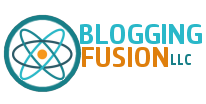
In today's fiercely competitive job market, your resume is far more than just a list of your past jobs; it's your personal marketing document, your professional passport, and often, your first and only chance to make a compelling impression. A bland, generic resume is a missed opportunity, often finding itself quickly sifted into the "no" pile. To truly stand out, you need to "beef up" your resume, transforming it from a mere historical record into a powerful, persuasive tool that broadcasts your value and potential.
This isn't about padding or embellishing; it's about strategic optimization, showcasing your achievements, aligning with employer needs, and presenting yourself as the ideal candidate. Here are the top tips to elevate your resume and open doors to your next career opportunity.
1. Tailor Relentlessly: One Size Fits None
This is arguably the most crucial tip. Resist the temptation to use a generic resume for every application. Each job description is a treasure map, detailing exactly what the employer is looking for.
- Deconstruct the Job Description: Read it carefully, highlighting keywords, required skills (both hard and soft), specific responsibilities, and company values.
- Mirror the Language: Incorporate these keywords naturally throughout your resume, especially in your professional summary, skill section, and experience bullet points. Applicant Tracking Systems (ATS) scan for these terms, and their absence can lead to your resume being filtered out before a human even sees it.
- Customize Your Summary: Your professional summary (or objective, if you're an entry-level candidate) should be a concise, powerful statement tailored to the specific role, highlighting your most relevant qualifications and what you can bring to that particular company.
2. Quantify Your Achievements: Show, Don't Just Tell
This is the golden rule of resume writing. Instead of just listing duties, demonstrate the impact of your work. Hiring managers want to see quantifiable results.
- Use Numbers, Percentages, and Metrics: "Managed social media" is weak. "Grew social media engagement by 40% over 6 months, leading to a 15% increase in website traffic" is powerful.
- Think STAR: Even if you don't use the full STAR method (Situation, Task, Action, Result) in your resume, consider its components when crafting bullet points. What was the challenge? What did you do? What was the positive outcome, ideally measured?
- Examples:
- Instead of: "Responsible for customer service."
- Try: "Resolved an average of 50+ customer inquiries daily, improving customer satisfaction scores by 10% in Q3."
- Instead of: "Managed projects."
- Try: "Spearheaded 3 large-scale IT projects, delivering them 10% under budget and 2 weeks ahead of schedule."
- Instead of: "Increased sales."
- Try: "Exceeded sales targets by an average of 20% consistently for 4 consecutive quarters, generating over $2M in new revenue."
- Instead of: "Responsible for customer service."
3. Master the Art of Action Verbs
Banish weak phrases like "responsible for," "duties included," or "assisted with." Instead, start each bullet point with a strong, dynamic action verb that conveys leadership, initiative, and achievement.
- Examples: Spearheaded, Orchestrated, Optimized, Generated, Engineered, Launched, Mentored, Negotiated, Cultivated, Transformed, Analyzed, Developed, Streamlined, Innovated, Coordinated, Facilitated, Implemented, Maximized, Pioneered, Reduced, Improved.
- Vary Your Verbs: Don't repeat the same verb too often. A varied vocabulary showcases your command of language and keeps the reader engaged.
4. Optimize for Applicant Tracking Systems (ATS)
Most large companies use ATS to scan, filter, and rank resumes. A poorly formatted resume can be ignored, regardless of your qualifications.
- Standard Fonts and Formatting: Stick to clean, universally recognized fonts (e.g., Arial, Calibri, Times New Roman, Georgia) and standard formatting. Avoid complex graphics, tables, or columns that can confuse ATS.
- Clear Headings: Use conventional headings like "Experience," "Skills," "Education," etc.
- Keyword Placement: Ensure keywords are integrated naturally throughout your resume, especially in a dedicated "Skills" section (broken down into technical, soft, and industry-specific if applicable).
5. Highlight Relevant Skills (Both Hard & Soft)
Beyond your experience, clearly list the skills that make you an asset.
- Technical/Hard Skills: Create a distinct section for software proficiency, programming languages, specific tools, certifications, and technical knowledge. Match these precisely to the job description.
- Soft Skills: While harder to quantify, integrate soft skills (e.g., communication, leadership, problem-solving, adaptability, teamwork) into your experience bullet points where they can be demonstrated. For example, "Led a cross-functional team of 5, fostering strong collaboration and achieving project goals ahead of schedule."
6. Craft a Compelling Professional Summary/Objective
This is your elevator pitch at the top of your resume, a prime piece of real estate.
- Professional Summary (Experienced Candidates): A 3-5 sentence paragraph that highlights your top skills, years of experience, key achievements, and career aspirations, tailored to the target role. Focus on what you bring to the employer.
- Objective Statement (Entry-Level/Career Changers): Briefly state your career goals and how your unique skills and passion align with the specific role and company.
7. Prioritize Readability and Visual Appeal
Even if your content is stellar, a messy or hard-to-read resume will deter hiring managers.
- White Space is Your Friend: Don't cram too much information onto a page. Allow for ample margins and space between sections.
- Consistent Formatting: Use consistent font sizes, bolding, and bullet point styles.
- Clear Headings and Subheadings: Make it easy for a recruiter to quickly scan and find the information they need.
- Bullet Points: Use them extensively for experience and achievements; they are far easier to digest than long paragraphs.
- Length: For most professionals, 1-2 pages is ideal. Entry-level can stick to one. Experienced professionals with 10+ years may extend to two. Quality over quantity always.
8. Leverage Your Online Presence (LinkedIn)
Your resume is a snapshot; your LinkedIn profile is the full gallery.
- Consistency: Ensure your resume and LinkedIn profile are consistent in terms of job titles, dates, and key achievements.
- Link It: Include a clean, professional link to your LinkedIn profile on your resume.
- Expand There: Use LinkedIn to elaborate on projects, share recommendations, list volunteer work, and connect with industry professionals.
9. Address Gaps and Career Transitions Strategically
Don't ignore gaps or try to hide career changes. Address them proactively and positively.
- Gaps: Briefly explain the reason (e.g., "Full-time caregiving," "Personal sabbatical for skill development," "Travel for cultural immersion"). Focus on any transferable skills gained or personal growth during that period.
- Career Transitions: Emphasize transferable skills, relevant projects, and the motivation behind your career change. A professional summary can be particularly useful here to bridge the gap.
10. The Meticulous Proofread (and Get a Second Pair of Eyes)
A single typo or grammatical error can undermine your credibility instantly.
- Read Aloud: This helps catch awkward phrasing and grammatical errors your eyes might miss.
- Use Spell Checkers and Grammar Tools: But don't rely on them exclusively.
- Print It Out: Sometimes errors are more visible on paper.
- Get a Second Opinion: Ask a trusted friend, family member, or career coach to review your resume. They might spot errors or suggest improvements you overlooked.
Beefing up your resume is an investment in your career. It requires time, introspection, and strategic thinking, but the payoff is immense. By transforming your resume into a dynamic, results-oriented marketing document that speaks directly to the needs of potential employers, you significantly increase your chances of landing that coveted interview and ultimately, your dream job. Remember, your resume isn't just about where you've been; it's about where you can go and the value you're ready to create.







0 Comments
Post Comment
You will need to Login or Register to comment on this post!